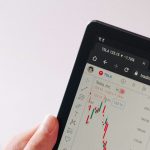In stock trading, what are micro e-mini futures?
Micro e-mini futures, also known simply as micros, are a type of futures contract smaller in size than traditional contracts. They were created to provide more liquidity and tighter spreads for traders who wanted to trade more minor positions. We’ll look at what micro e-mini futures are, how they work, and some of their benefits.
What are micro e-mini futures contracts, and what do they represent in the stock market?
Micro e-mini futures contracts are a type of futures contract that is much smaller in size than traditional contracts. They were created by the Chicago Mercantile Exchange (CME) in 2018 to provide more liquidity and tighter spreads for traders who want to trade more minor positions.
For example, while a standard E-mini S&P 500 Futures contract represents 50 times the value of the underlying index, a micro E-mini S&P 500 Futures contract represents only five times the value of the underlying index.
This smaller contract size makes micro e-minis more accessible to a broader range of traders, including individual investors and small businesses who might not have the capital to trade larger contracts. In addition, because they are less expensive to trade, micro e-minis can be an excellent way to test new trading strategies with less risk.
How do micro e-mini futures work?
Micro e-mini futures work just like any other type of futures contract. Traders agree to buy or sell a particular asset at a set price on a specific date in the future. If the underlying asset price goes up, the trader who bought the contract will make money, while the trader who sold the contract will lose money. Conversely, if the underlying asset price goes down, the trader who sold the contract will make money, while the trader who bought the contract will lose money.
Because micro e-mini contracts are much smaller than traditional contracts, they are less expensive to trade. It makes them a good choice for traders who want to test new strategies with less risk. In addition, the smaller contract size means that micro e-minis are more liquid than traditional contracts, making it easier to enter and exit positions.
How do micro e-mini futures work, and how do investors trade them?
Micro e-mini futures contracts are traded on the Chicago Mercantile Exchange (CME). You can trade them electronically through a broker or on the exchange floor.
To trade micro e-mini futures, investors must first open an account with a broker that offers access to the CME. Once an account is opened, investors can deposit funds and start trading.
It’s important to note that micro e-minis are leveraged products, meaning traders only need to invest a small amount of capital in taking on a more prominent position. It can magnify both profits and losses, so carefully consider your risk tolerance before trading micro e-minis.
What are some of the benefits of trading micro e-mini futures?
First, because they are smaller, they are less expensive to trade than traditional contracts. It can make them a good choice for traders who want to test new strategies with less risk.
Second, the smaller contract size means that micro e-minis are more liquid than traditional contracts, making it easier to enter and exit positions.
Finally, micro e-minis offer access to various markets, including indices, commodities, and currencies.
Are there any risks associated with trading in micro e-mini futures?
Yes, there are risks associated with trading in micro e-mini futures. First, they can magnify profits and losses because they are leveraged products. Second, micro e-minis are traded on margin, meaning traders must put up a certain amount of collateral to trade.
If the value of their position falls below the margin requirements, they may be subject to a margin call, which would require them to deposit more funds or close out their position. Finally, micro e-mini contracts are subject to the same risks as any other type of futures contract, including market risk, liquidity risk, and counterparty risk.
To sum up
Micro e-mini futures contracts are a type of futures contract that is traded on the Chicago Mercantile Exchange (CME). They are a good choice for traders who want to test new strategies with less risk. In addition, the smaller contract size means that micro e-minis are more liquid than traditional contracts, making it easier to enter and exit positions.














